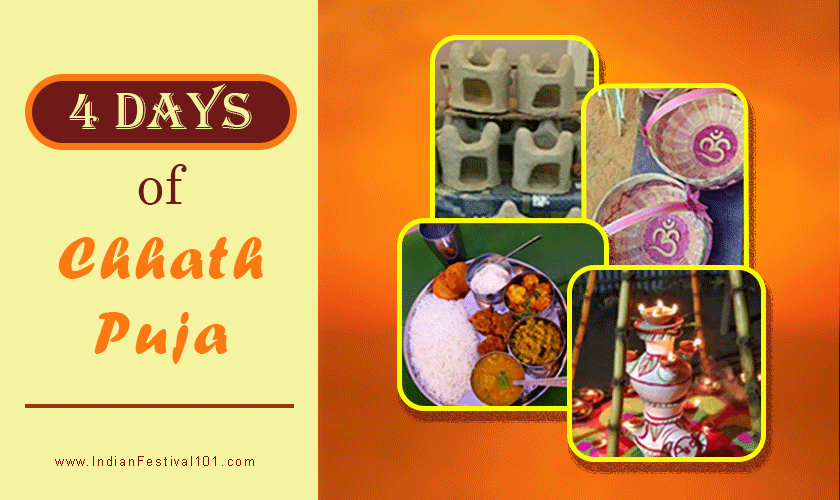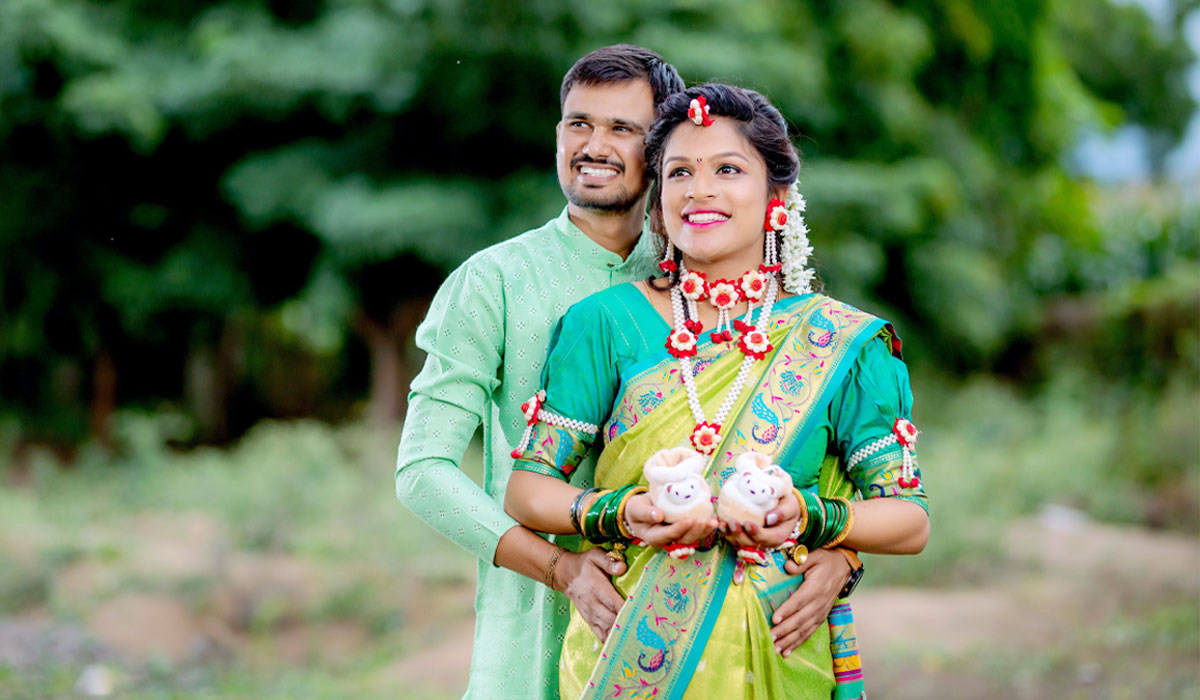4 Days of Chhath Puja: Chhath Puja is one of the most important festivals in north India. The festival is most popular in Bihar, Jharkhand, and Uttar Pradesh.
Chhath puja is a Sun festival dedicated to the lord sun-the only source of energy and light. The festival is a 4 days festival and is celebrated with much pomp and excitement. We are here to talk about 4 days of Chhath puja, preparation, rituals, and celebration.
Chhath Puja 2022 Dates
Chhath Puja is celebrated over four days. Here is the date list for Chhath Puja 2022.
|
CHHATH PUJA 2022
|
|||
|
S.N. |
DATE |
DAY |
RITUAL |
|
1st Day |
28 October |
Friday |
Nahay-Khay |
|
2nd Day |
29 October |
Saturday |
Lohanda and Kharna |
|
3rd Day |
30 October |
Sunday |
Sandhya Argh |
|
4th Day |
31 October |
Monday |
Suryodaya/Usha Argh and Paran |
Four Days of Chhath Puja
Chhath Puja is a four-day Indian festival. Each day has its own importance. as per the rituals and traditions.
Nahay-Khay: 1st Days of Chhath Puja
The first day of the Chhath Puja is observed as the devotees have to take bath in the holy river. Nahay Khay is the guideline to prepare our mind and body to be peaceful and purified before the actual puja. On this day, ladies observing the fast can allow themselves only one meal on this day. Since the festival is celebrated over four days, each day has its own importance.
Lohanda and Kharna: 2nd Days of Chhath Puja
On the second day of Chhath puja, the devotees are to observe a fast for the entire day, which they can break just a while after sunset. On this day, Vratins cook the whole Prasad on their own which includes Kheer (a Special type of dish) and chapatis. They break their fast with this Prasad after which they have to fast without water for 36 hours.
Sandhya Arghya: 3rd Day of Chhath Puja
The third day of Chhath puja is devoted to setting Sun. On this day, in the evening, the entire household of the Vratins accompanies them to the riverbank, where they make offerings to the setting Sun. The evenings are made even better with enthusiastic folk songs.
The females generally wear Sarees of turmeric yellow color while making their offerings. The evenings are made even better with enthusiastic folk songs.
Usha Arghya: 4th Day of Chhath Puja
The fourth day of Chhath puja is devoted to the rising Sun. On this day, devotees offer prayer to the rising sun. People dress up in traditional clothes and throng the banks before sunrise, to witness the ‘Arghya’. They go to the riverbank before sunrise to make offerings to the rising sun. On this day, Vratins break their 36 hours fast (called Paran).er to their house to have their share of Prasad
Food During Chhath Puja
Hindu religious festivals are celebrated with Puja and prasad. Chhath puja is a special festival covering a variety of food in the ritual. Preparation of prasad is done with fresh fruits, dry fruits, cooked food, and sugarcane.
The Chhath Prasad is traditionally prepared with rice, wheat, dry fruits, fresh fruits, nuts, jaggery, coconut, and lots and lots of ghee. The food prepared for Chhath Puja is without salt, onion, and garlic.
Thekua, a traditional Indian food, is popularly known as Chhath Puja. It is cooked with whole wheat flour. You must surely try it if you visit the place during the festival.
Chhath Puja Rituals
Chhath puja rituals are performed as per the Indian culture, tradition, and belief. Since the festival originated in North India, therefore, north Indian rituals and traditions can be seen in the Chhath Puja festival.
The rituals mainly comprise fasting and chanting prayers on the bank of the Ganga, Yamuna, or any clean river.
As tradition goes, after offering the ‘Arghya’ at sunset, devotees and their relatives sing ‘geet’ and hymns dedicated to Lord Surya.
As the Sun God manifests his greatest power in the rising and setting sun, these two significant moments coincide with the two ‘Aragyas’ or offering of river water to Lord Surya during the festival.
Devotees pay obeisance to the Sun God by offering rice, sugarcane, home-prepared ‘Thekua’ or wheat cakes, and various fruits in bamboo baskets or ‘Soop’.
The Tradition of Chhath Puja
In accordance with a strict tradition, this is a period for the devotees to be fasting and abstaining from drinking water, as well as to be performing ablutions and standing in water for a long period of time and performing the ceremonies of worshipping the Sun rising or setting. The contact with water and prolonged meditative staying in it is an essential part of the ceremonies.
It is noteworthy that this is one of the rare Hindu holidays in which priests are not involved at all.
Prayer communication with the Sun implies detachment from the vanities of the world.
Although it takes place together with the relatives around and with a huge number of other participants in the ritual.
As tradition goes, after offering the ‘Arghya’ at sunset, devotees and their relatives sing ‘geet’ and hymns dedicated to Lord Surya.
As the Sun God manifests his greatest power in the rising and setting sun, these two significant moments coincide with the two ‘Aragyas’ or offering of river water to Lord Surya during the festival.
Devotees pay obeisance to the Sun God by offering rice, sugarcane, home-prepared ‘Thekua’ or wheat cakes, and various fruits in bamboo baskets or ‘soop’.




